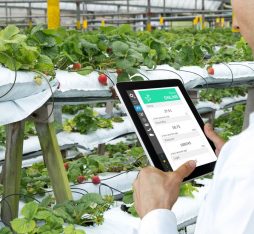“LTE-M offers very wide coverage and consumes very little energy, which is ideal for connected objects.”
What is the “Open IoT Lab”? Why was a decision to launch this initiative made one year ago?
Thibault de la Fresnaye: The idea behind the Open IoT Lab stems partly from the realisation that when you visit sites dedicated to innovation, such as incubators or accelerators, you’ll notice that nothing is actually offered in terms of connectivity.
Structures can give support and provide services, tools or specific technologies, but there’s no place where you can do any advanced work on telecom networks of the future. When it comes to connected objects, this is especially problematic because not everyone needs – or has the ability – to go through “traditional” networks.
That’s why we launched the Open IoT Lab in May 2017 in Châtillon, at Orange Gardens, which is the Group’s dedicated innovation campus. People who come to the Lab, whether they are with start-ups or partner companies, can test connected objects or software they’re developing on the future LTE-M network, which is one of the networks that Orange is working on.
We put our expertise at their disposal and provide them with technical tools and test equipment so that they can analyse this network’s energy consumption, check the connectivity level, or compare the LTE-M network to other networks.
![]()
So, is the LTE-M network specifically recommended for connected objects?
Thibault de la Fresnaye: The LTE-M is an interesting cellular technology because it offers very wide coverage and consumes very little energy, which is ideal for connected objects. This low consumption rate has a significant impact on the battery’s service life if the connected object is not going to be connected to an electrical power source.
(However), The LTE-M network doesn’t enable one to transmit as much data as one can on 4G or 5G. The data speed is much lower, in the order of 250 kb/s. That’s what makes it a financially more inexpensive technology than those that require greater bandwidth. All of this needs to be taken into account when one launches a new object or service on the market!
Lastly, the LTE-M network represents an evolution from traditional networks. It uses the same protocols. This means that data security is equivalent to that of current 4G networks, and its deployment, which will take place over the course of 2018 in France and Spain, will not require implementing dedicated antennas.
One year after launching the Open IoT Lab, what are some initial lessons learned from this project?
Thibault de la Fresnaye: First and foremost, there is a real demand in this arena! Certain usage situations are also emerging from an industrial perspective as well as a more personal one. We are exchanging many ideas with makers of tracking devices, who are working on objects that would enable one to monitor a fleet of vehicles, for example, as well as individual objects that provide security for individuals, or to work with players in the energy realm, for whom the LTE-M network seems ideally suited for taking automatic readings of meters. The security sector is also interested in the benefits presented by the network. And then, one can also consider [applications intended for] smart cities. There are also more forward-looking projects, such as those pertaining to smart homes, connected health or wearables.
I also want to add that people who come to the Lab love to share ideas about their respective projects, requirements, and discoveries. Start-ups working with industrial partners create a true ecosystem that encourages testing new functionalities, and sharing impressions and ideas, which is not necessarily something they can do elsewhere!
![]()
The LTE-M will certainly be deployed this year. Will the Open IoT Lab lose its relevancy?
Thibault de la Fresnaye: The Lab will evolve alongside the LTE-M, which in the long term will support a transmission rate of 1 mb/s compared to 250kb/s today and will work in energy-saving modes (partial listening, depth monitoring, etc.). Here, too, we’re going to offer this in the early stages. Then, we’re going to offer 5G of course. We’re expecting to deploy a test network in the near future.
We’re lucky to be in an environment that is changing very rapidly, and we are continuously coming up with innovations on telecommunication networks. The Open IoT Lab still has a bright future, commensurate with the number of connected objects that will continue to increase in the years to come.










